Showing posts with label Mobile. Show all posts
Tuesday, 18 November 2014
Opera mobile store to become the default app store on legacy Nokia phones
Opera Software has signed an agreement with Microsoft to become the default mobile app store on the Nokia Symbian feature phones and Nokia X platform devices. From the first quarter of next year, the Nokia Store app will redirect to the Opera Mobile Store for the Nokia Series 40, Series 60, Symbian, Asha, and Nokia X.
With the agreement, Opera will be the third largest mobile app store in the world after Google Play and the App Store. Over 40,000 developers contribute to the Opera mobile store ecosystem, which has close to 300,000 apps and sees about 70 million downloads every month. Opera recently surpassed 50 millions users in India and has become the third most downloaded app in the country.
Lars Boilesen, CEO of Opera Software, told Tech in Asia: “We are the third biggest independent mobile advertising company after Facebook and Google. With our strong user base, the mobile app developers can advertise their apps to a larger audience and also make the best of our billing integration which lets users buy apps even without a credit card.”
Nokia Symbian, Asha, and Nokia X device owners will get to use the web-based Opera mobile store to browse, discover, and download apps. However, users on the Nokia X platform, which is based on the Android Open Source Project, will have a slightly different experience. The tweak is needed in order to deliver a typical Android smartphone experience to these users.
The migration of the Nokia app store to Opera is expected to finish by the first half of 2015. The Nokia store will no longer be accessible following the move.
techinasia
With the agreement, Opera will be the third largest mobile app store in the world after Google Play and the App Store. Over 40,000 developers contribute to the Opera mobile store ecosystem, which has close to 300,000 apps and sees about 70 million downloads every month. Opera recently surpassed 50 millions users in India and has become the third most downloaded app in the country.
Lars Boilesen, CEO of Opera Software, told Tech in Asia: “We are the third biggest independent mobile advertising company after Facebook and Google. With our strong user base, the mobile app developers can advertise their apps to a larger audience and also make the best of our billing integration which lets users buy apps even without a credit card.”
Nokia Symbian, Asha, and Nokia X device owners will get to use the web-based Opera mobile store to browse, discover, and download apps. However, users on the Nokia X platform, which is based on the Android Open Source Project, will have a slightly different experience. The tweak is needed in order to deliver a typical Android smartphone experience to these users.
The migration of the Nokia app store to Opera is expected to finish by the first half of 2015. The Nokia store will no longer be accessible following the move.
techinasia
Microsoft to shut down Nokia Store for feature phones
As Microsoft continues sloughing off the Nokia brand name on phones, the Nokia Store for feature phones will cease to exist.
Having already dropped the Nokia branding for its latest smartphone -- the Microsoft Lumia 535 -- Microsoft is set to shut down the Nokia Store in the first half of 2015.
The Nokia Store enables owners of Nokia feature phones, such as the Asha series, and Symbian and Nokia X phones to download apps to their devices. Based on the last statistics released two years ago, the store was serving up to 15 million downloads daily.
Users will, however, still be able to get access to apps via a deal with Opera Software. Starting in the first quarter of 2015, users will be redirected to the Opera Mobile Store, which currently has close to 300,000 apps.
The migration of users to the Opera Mobile Store is expected to be complete in the first half of 2015, when the Nokia Store shuts down.
Both Microsoft and Opera are "looking into methods to help developers move their content over, and this will be communicated to developers ahead of the migration," Opera said in statement.
As for phone owners who have paid for apps from the Nokia Store, Opera said the "the company will work closely with developers to find out the best solution for consumers."
Opera added that consumers should not delete a previously purchased app once the transition takes place, or they will need to buy it again.
This isn't the first time that Opera and Microsoft have collaborated. In August, both companies struck a deal to use the Opera Mini browser as the default browser for Microsoft's feature and Asha handsets.
cnet
Having already dropped the Nokia branding for its latest smartphone -- the Microsoft Lumia 535 -- Microsoft is set to shut down the Nokia Store in the first half of 2015.
The Nokia Store enables owners of Nokia feature phones, such as the Asha series, and Symbian and Nokia X phones to download apps to their devices. Based on the last statistics released two years ago, the store was serving up to 15 million downloads daily.
Users will, however, still be able to get access to apps via a deal with Opera Software. Starting in the first quarter of 2015, users will be redirected to the Opera Mobile Store, which currently has close to 300,000 apps.
The migration of users to the Opera Mobile Store is expected to be complete in the first half of 2015, when the Nokia Store shuts down.
Both Microsoft and Opera are "looking into methods to help developers move their content over, and this will be communicated to developers ahead of the migration," Opera said in statement.
As for phone owners who have paid for apps from the Nokia Store, Opera said the "the company will work closely with developers to find out the best solution for consumers."
Opera added that consumers should not delete a previously purchased app once the transition takes place, or they will need to buy it again.
This isn't the first time that Opera and Microsoft have collaborated. In August, both companies struck a deal to use the Opera Mini browser as the default browser for Microsoft's feature and Asha handsets.
cnet
Samsung to cut smartphone models by up to a third in 2015
Samsung will stop producing so many models of smartphones and focus on a core set of devices in the new year, the company said Tuesday.
Speaking to investors in New York, Samsung's head of investor relations, Robert Yi, said his company plans to cut the number of smartphone models it produces in 2015 by 25 percent to 30 percent, The Wall Street Journal reported.
Though Samsung is still a juggernaut in the mobile business, the company has watched its smartphone business start to falter in key markets, such as China. In China specifically, chief competitor Xiaomi has been able to increase smartphone shipments and get consumers excited about its products by delivering higher-end devices at budget-conscious prices.
Meanwhile, Apple, with its new iPhone 6 and iPhone 6 Plus, has moved to offer smartphones with larger screens, which had been a key point of distinction for Samsung.
The South Korean company's latest quarterly returns put the situation in stark relief. At the end of October, Samsung said that third-quarter income in its mobile business tumbled 74 percent from the previous year and that its operating profits were the lowest they'd been since the middle of 2011. It also warned that smartphone competition would be fierce toward the end of the year.
Samsung is also dealing with increasingly strained margins as its marketing costs have risen considerably. In the third quarter, the company generated just 7 percent margins on smartphones, down from 15 percent in previous years, the Journal reported.
Prompted by the shifts, Samsung had already said that it plans to "fundamentally reform" its product lineup.
Here's how overwhelming Samsung's array of products has become: In just its flagship Galaxy S line, Samsung offers five models beyond the namesake Galaxy S5: the knockabout Galaxy S5 Active and Galaxy S5 Sport; the more modest Galaxy S5 Mini; the Galaxy K Zoom with a higher-end camera; and the Galaxy S5 LTE-Advanced for higher Internet speeds.
There's also the Note phablet line, the new, metal-clad Galaxy Alpha devices and a long list of other Android and Windows Phones devices.
The idea behind streamlining its offerings is simple: the company will be able to cut its overall costs and find ways to improve efficiency in production. Marketing dollars will also be spread across fewer products. Samsung is also planning to use the same components in multiple products to help cut costs.
Yi didn't say how many smartphones the company will ship next year. The company did not respond to a request for comment.
CNET
Speaking to investors in New York, Samsung's head of investor relations, Robert Yi, said his company plans to cut the number of smartphone models it produces in 2015 by 25 percent to 30 percent, The Wall Street Journal reported.
Though Samsung is still a juggernaut in the mobile business, the company has watched its smartphone business start to falter in key markets, such as China. In China specifically, chief competitor Xiaomi has been able to increase smartphone shipments and get consumers excited about its products by delivering higher-end devices at budget-conscious prices.
Meanwhile, Apple, with its new iPhone 6 and iPhone 6 Plus, has moved to offer smartphones with larger screens, which had been a key point of distinction for Samsung.
The South Korean company's latest quarterly returns put the situation in stark relief. At the end of October, Samsung said that third-quarter income in its mobile business tumbled 74 percent from the previous year and that its operating profits were the lowest they'd been since the middle of 2011. It also warned that smartphone competition would be fierce toward the end of the year.
Samsung is also dealing with increasingly strained margins as its marketing costs have risen considerably. In the third quarter, the company generated just 7 percent margins on smartphones, down from 15 percent in previous years, the Journal reported.
Prompted by the shifts, Samsung had already said that it plans to "fundamentally reform" its product lineup.
Here's how overwhelming Samsung's array of products has become: In just its flagship Galaxy S line, Samsung offers five models beyond the namesake Galaxy S5: the knockabout Galaxy S5 Active and Galaxy S5 Sport; the more modest Galaxy S5 Mini; the Galaxy K Zoom with a higher-end camera; and the Galaxy S5 LTE-Advanced for higher Internet speeds.
There's also the Note phablet line, the new, metal-clad Galaxy Alpha devices and a long list of other Android and Windows Phones devices.
The idea behind streamlining its offerings is simple: the company will be able to cut its overall costs and find ways to improve efficiency in production. Marketing dollars will also be spread across fewer products. Samsung is also planning to use the same components in multiple products to help cut costs.
Yi didn't say how many smartphones the company will ship next year. The company did not respond to a request for comment.
CNET
Thursday, 6 November 2014
OnePlus has sold 500,000 phones so far, half of them in China
OnePlus has sold just over 500,000 phones since the new Chinese brand hit the market in 16 countries in May. Carl Pei, OnePlus’ co-founder, revealed the number to Forbes and said that the plan is to sell one million by the end of the year.
Pei explained to Tech in Asia via email that half of those phones sold are in China.
OnePlus makes only one gadget at the moment, the Android-based OnePlus One, which has received largely positive reviews from around the world for being a solid yet powerful phone for just US$300.
While one million would be a solid tally for OnePlus’ first eight months in business, it seems clear that the new brand, which is a spin-off from Oppo, is not seeing the same traction as Xiaomi. The disruptive Xiaomi, which first started making affordable smartphones in late 2011, sold 7.2 million phones in 2012, its first full year in business. Xiaomi plans to sell 60 million this year.
Pei also explained to Forbes that – following the lead of Xiaomi again – OnePlus is looking into making a variety of gadget accessories in order to boost its revenues. “We’ve made a really social brand that people are fans of. If we make lifestyle products or specialized accessories, I think those will do really well,” he added.
The need to make money from other channels is imperative because, as Pei reveals, OnePlus makes a mere “single-figure dollar amount on each phone” that it sells. It’s already running a trimmed-down business that only sells online and has minimal inventory. But that makes it tough to ramp up production. Pei replied to our question about manufacturing constraints by explaining: “Manufacturing capacity has never been the issue, but rather planning. A key component [of the phone] has a three-month order lead time, and due to us not having large margins, we can’t afford to manufacture more than we’re sure to sell.”
TechInAsia
Pei explained to Tech in Asia via email that half of those phones sold are in China.
OnePlus makes only one gadget at the moment, the Android-based OnePlus One, which has received largely positive reviews from around the world for being a solid yet powerful phone for just US$300.
While one million would be a solid tally for OnePlus’ first eight months in business, it seems clear that the new brand, which is a spin-off from Oppo, is not seeing the same traction as Xiaomi. The disruptive Xiaomi, which first started making affordable smartphones in late 2011, sold 7.2 million phones in 2012, its first full year in business. Xiaomi plans to sell 60 million this year.
Pei also explained to Forbes that – following the lead of Xiaomi again – OnePlus is looking into making a variety of gadget accessories in order to boost its revenues. “We’ve made a really social brand that people are fans of. If we make lifestyle products or specialized accessories, I think those will do really well,” he added.
The need to make money from other channels is imperative because, as Pei reveals, OnePlus makes a mere “single-figure dollar amount on each phone” that it sells. It’s already running a trimmed-down business that only sells online and has minimal inventory. But that makes it tough to ramp up production. Pei replied to our question about manufacturing constraints by explaining: “Manufacturing capacity has never been the issue, but rather planning. A key component [of the phone] has a three-month order lead time, and due to us not having large margins, we can’t afford to manufacture more than we’re sure to sell.”
TechInAsia
Sunday, 2 November 2014
5 Tough Cases for Your iPhone 6
The iPhone 6 is bigger than ever, meaning you get the benefits of a large screen — an improved display and functionality — but also a greater target to crack if it’s dropped (not to mention its bendable aluminum case). This is why you might want more rugged protection with the new iPhone 6 and 6 Plus. Here are five cases to better protect your new smartphone — bends, unexpected drops, and beer spills included.
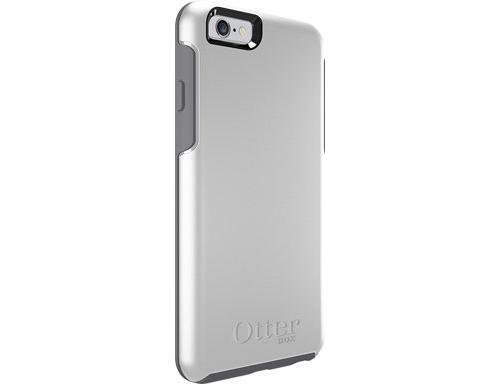
1. Best for unobtrusive protection
The Case: OtterBox Symmetry Series (Current price: $49.95 for iPhone 6 Plus case)
What We Like: It easily fit in our pocket. (And our iPhone 6 didn’t bend.)
Toughness: The Symmetry’s thin frame has just enough rubber jutting out on the front to protect the screen. Overall, it’s unobtrusive and designed to look like a form that goes over the phone rather than a case. Plus, the rubber and silicone edges give the phone a bounce when dropped dangerously on its corners or edges.
More from Men’s Journal:
The 9 Most Stylish iPhone 6 Cases on the Market
The 10 Best Smartphone Accessories
Should You Buy an iPhone 6?
More from Men’s Journal:
The 9 Most Stylish iPhone 6 Cases on the Market
The 10 Best Smartphone Accessories
Should You Buy an iPhone 6?
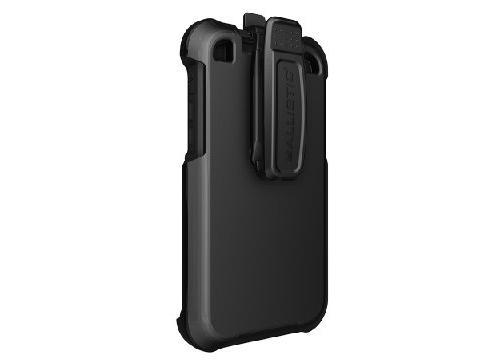
2. Best for outdoor use
The Case: Ballistic Hard Core Case ($60)
What We Like: That extra security that makes you feel a lot more powerful than you actually are.
Toughness: This one means business. Four pieces combine to shield your iPhone. In fact, you should probably be more worried about getting it out of the case. The main unit keeps it secure with several clasps and a screen cover. A third, tougher layer’s clip lets you carry it on your side, which might be preferable to your pockets. To round it off, a rubber exterior shell provides extra padding for drops up to 12 feet.
What We Like: That extra security that makes you feel a lot more powerful than you actually are.
Toughness: This one means business. Four pieces combine to shield your iPhone. In fact, you should probably be more worried about getting it out of the case. The main unit keeps it secure with several clasps and a screen cover. A third, tougher layer’s clip lets you carry it on your side, which might be preferable to your pockets. To round it off, a rubber exterior shell provides extra padding for drops up to 12 feet.
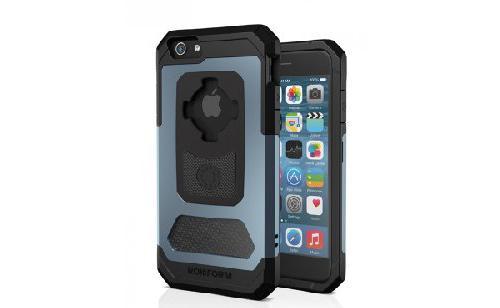
3. Best for commuting
The Case: Rokform Aluminum Case ($98.99)
What We Like: The mounting accessories. They make it possible to use your phone’s GPS in the car or on your bike commute without worrying about that inevitable drop. Because it’s not a question of if it’s going to happen, but when.
Toughness: California-based Rokform designed this body of tech armor with sturdy aluminum and rubber that protect your phone on all sides and edges.
What We Like: The mounting accessories. They make it possible to use your phone’s GPS in the car or on your bike commute without worrying about that inevitable drop. Because it’s not a question of if it’s going to happen, but when.
Toughness: California-based Rokform designed this body of tech armor with sturdy aluminum and rubber that protect your phone on all sides and edges.
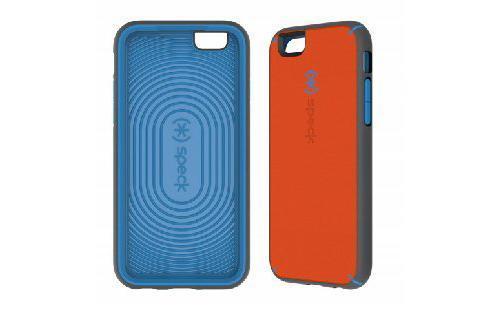
4. Best for Grip
The Case: Speck MightyShell ($34.95)
What We Like: The outer edges offer some extra holding power, which will come in handy when you upgrade and first grab your phone.
Toughness: Don’t let the fun colors and thin body fool you — this case can withstand some pretty intense impact. Speck prepared the MightyShell to expect those drops down flights of stairs with a shock-absorbing casing that surrounds the phone, including the front edges of the fragile screen.
What We Like: The outer edges offer some extra holding power, which will come in handy when you upgrade and first grab your phone.
Toughness: Don’t let the fun colors and thin body fool you — this case can withstand some pretty intense impact. Speck prepared the MightyShell to expect those drops down flights of stairs with a shock-absorbing casing that surrounds the phone, including the front edges of the fragile screen.
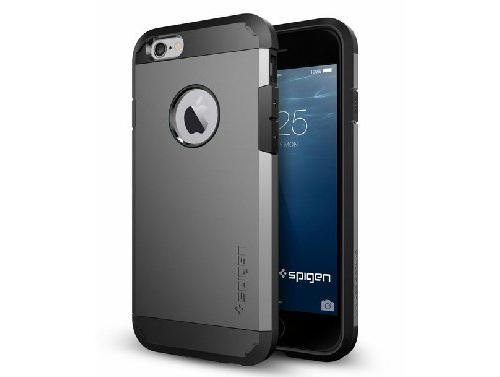
5. Best for sliding in your pocket
The Case: Spigen Tough Armor Case ($35)
What We Like: Its slim design and armor-like appearance.
Toughness: The name of this case indicates serious protection — and then some. With a polycarbonate body and an intuitive design, your phone will feel safe without being in the way. Although it’s not as large as a traditional heavy-duty case, the Tough Armor houses a slim profile with an outer lip that prevents a cracked screen, which can be a hard thing to find in thinner cases.
What We Like: Its slim design and armor-like appearance.
Toughness: The name of this case indicates serious protection — and then some. With a polycarbonate body and an intuitive design, your phone will feel safe without being in the way. Although it’s not as large as a traditional heavy-duty case, the Tough Armor houses a slim profile with an outer lip that prevents a cracked screen, which can be a hard thing to find in thinner cases.
Yahoo
Samsung’s 2 New Phones Are All Metal, All Selfie, All Too Familiar
Oh, hey, is that your iPhone … wait a minute. That’s not an iPhone. That’s a … Samsung?
That’s right; Samsung has just announced two new smartphones that are dead ringers for Apple’s iPhone 5 and 5s. Say hello to the Galaxy A5 and the Galaxy A3, two handsets that Samsung hopes will get younger smartphone shoppers interested in the Korean company’s wares.
Samsung is pushing the handsets’ “social networking” capabilities, which is to say they’ve got sharp front cameras for taking clear selfies. Does anyone else find it upsetting that phones are now being marketed based on their selfie abilities?
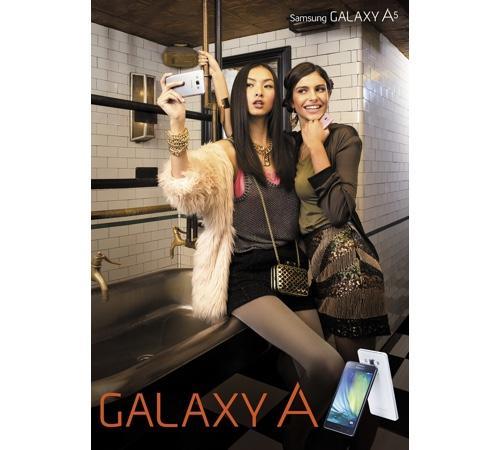
Duck-faced bathroom mirror photos aside, another thing that makes the Galaxy A5 and A3 so interesting is the fact that they use an all-metal design. That means that the phones are built just like Apple’s iPhone and HTC’s One M8, two of the most attractive phones on the market.
Samsung has taken a lot of heat for using too much plastic on its smartphones, while other companies use more premium metal materials. With its recent Galaxy Alpha and Note 4, Samsung has tried to change course, using aluminum frames but sticking with plastic back panels.
The phones’ unibody designs also help make them the thinnest Samsung smartphones around, with the A5 and A3 measuring just 0.26 inches and 0.27 inches thick, respectively.
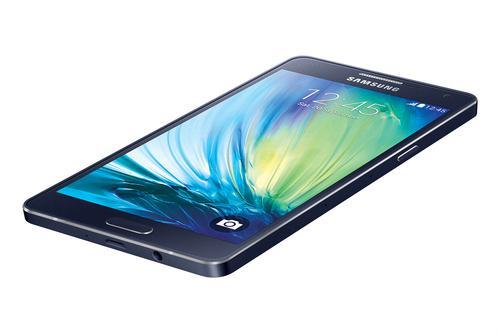
Both phones get Samsung’s excellent Super AMOLED display technology, though the A5 gets a 5-inch HD screen and the A3 gets a 4.5-inch qHD screen. That means the A5’s display will be sharper and clearer than the A3’s.
Inside, the Galaxy A5 and A3 get quad-core processors, though the A5 gets 2 GB of RAM, while the A3 gets just 1 GB, so the A5 will likely be a bit faster than its sibling.
The Galaxy A5 also gets a 13-megapixel rear camera versus the A3’s 8 MP rear camera. Both phones, however, get the same 5-megapixel front cameras. Most smartphones don’t offer front-facing cameras with such high megapixel counts, but Samsung wants to make sure your selfies look as good as possible.
There’s just one downside to the Galaxy A5’s and Galaxy A3’s new unibody design, and that’s the fact that the phones’ back panels aren’t removable, so you won’t be able to replace their batteries if they start to go south on you. Still, the handsets will include microUSB card slots for expanding storage space.
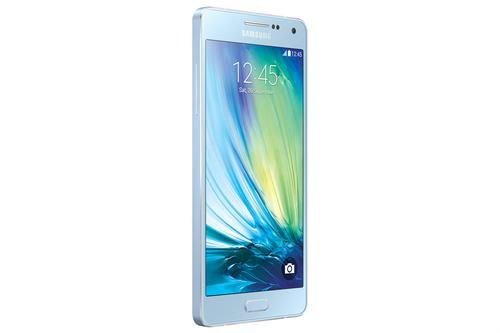
The Galaxy A5 and Galaxy A3 are the latest in a string of smartphones Samsung has released in 2014. In fact, in 2014 alone, the company has debuted no fewer than 10 new handsets.
The largest smartphone manufacturer in the world, Samsung has hit a rough patch as of late, with the company recently announcing that it saw a 60 percent drop in profit. Sales of Samsung smartphones also saw a decrease of 20 percent versus last year.
One of the biggest issues facing Samsung has been its performance in China, the largest smartphone market in the world. Chinese consumers have begun moving away from Samsung’s devices in favor of local brands, which are generally high quality and low cost.
The Galaxy A5 and A3, which will launch first in China as midrange handsets, are a clear indication that Samsung is serious about winning back Chinese consumers.
So far, Samsung hasn’t announced any plans to bring the Galaxy A5 and A3 to the United States. But we’re still holding out hope. At the very least, we’d like to see more Samsung phones use the new handsets’ design.
Daniel Howley - YAHOO
Friday, 24 October 2014
Sony Xperia Z3v: Verizon's PlayStation Phone Reviewed
Most consumers today know Sony for its PlayStation gaming consoles, TVs, movies, and the legendary Walkman. You’d be forgiven, though, if you didn’t know that the Japanese tech giant also offers a line of smartphones. But just one carrier, T-Mobile, currently sells Sony’s handsets. Until now, that is.
Verizon, which hasn’t offered a Sony smartphone for years, is rolling out its exclusive Sony Xperia Z3v. Available for $199 with a two-year contract, the Z3v is a competitor to mainstream, high-end phones like the Apple’s iPhone 6 and Samsung’s Galaxy S5.
The Z3v is a good phone with unique features — it lets you stream PlayStation 4 games! — but compared with those power hitters, it’s not quite in the same league.
DesignDespite its name, the Z3v more closely resembles Sony’s bulkier Xperia Z2 rather than the newer, slimmer, sleeker, and overall better-looking Xperia Z3, which is available on T-Mobile.
In fact, at 0.35 inches thick, the Z3v is thicker than both the Z2 (0.32 inches) and the Z3 (0.30) inches. To compare, Apple’s iPhone 6, which at $199 costs the same as the Z3v, measures just 0.27 inches thick, while Samsung’s Galaxy S5 is 0.31 inches thick. In other words, the Z3v is not for the skinny-jeans contingent.
The Z3v is also relatively heavy, weighing 6 ounces, compared with the iPhone 6’s 4.6 ounces and the Galaxy S5’s 5.1 ounces. It’s worth pointing out, though, that the Xperia Z3v sports a 5.2-inch display, while the iPhone 6 and Galaxy S5 have 4.7-inch and 5.1-inch displays, respectively.
So it’s chunky. But how does the Xperia Z3v feel? Not bad. Its heft is noticeable when you pick it up, but it’s not uncomfortable. Built with an aluminum frame and a glass back panel, the Z3v feels like a premium handset. Unfortunately, that glass back also picks up a lot of fingerprint grime. Yuck.
Like the Z2 and Z3, the Z3v is waterproof and dustproof. In fact, you can take this phone down to 5 feet underwater for 30 minutes, and it’ll keep on ticking. The S5 is waterproof up to 3 feet for 30 minutes, while the iPhone 6 models don’t offer any waterproofing. The Z3v does have those annoying port covers over its microUSB, SIM card, and microSD card slots, though, to keep it watertight.
DisplayMy one major issue with Sony’s previous smartphones has been their displays. They’ve generally been too dim and looked washed out when viewed at an angle. Sony has addressed these problems with the Z3v.
It’s not a stretch to say that this phone’s 5.2-inch, 1920 × 1080 resolution screen is the best available on a Sony handset. Images are brighter, colors are bolder, and, oh yeah, the display doesn’t wash out.
Sony says its Triluminos display technology allows the Xperia Z3v handset to produce vibrant colors, while its X-Reality for Mobile imaging software enables the Z3v to improve overall image quality. To be honest, though, I found that the Xperia’s screen was just as sharp as the Galaxy S5’s and iPhone 6’s.
I did notice, however, that whites on the Z3v looked slightly gray and dim when viewed next to the S5 and the iPhone. You can adjust the phone’s white balance in the Display settings menu, but should you really have to do that with a new phone?
This is Sony’s best display, but not the best display around. That title is still held by the Galaxy S5.
A clean interfaceLike most Android phone makers, Sony puts its own user interface on top of Google’s Android 4.4 KitKat operating system. Thankfully, however, Sony’s interface is relatively low key. It’s not nearly as confusing and clunky as Samsung’s TouchWiz.
The main home screen gets a Google search bar widget and shortcuts to the phone’s Walkman, Album, Movies, and PlayStation apps. Sony doesn’t include any alternative home screens like Samsung’s My Magazine or HTC’s BlinkFeed, which provide you with continuously updated content based on your interests.
Instead, you get a handful of normal home screens, which should make Android purists fairly happy.
If there’s one thing users might find a bit disorienting about the Xperia Z3v’s interface, it’s the size of its app icons. Compared with those found on competing handsets, these things look absolutely massive, which is a bit annoying.
Bloatware to the extremeOn the apps side of things, the Xperia Z3v is a perfect case study in bloatware taken to the extreme. Verizon apps include Verizon Caller Name ID (a $2.99 per month charge if you sign up) Verizon Cloud, Verizon Message+, My Verizon Mobile, NFL Mobile, VZ Navigator ($9.99 per month), and VZ Protect.
Then there are the Sony apps, which include Album, Lifelog (a step, running, sleep tracker), Movies, PlayStation, Smart Connect, Sony Select (a secondary app store), Sony Video Unlimited, Walkman, and Xperia Lounge.
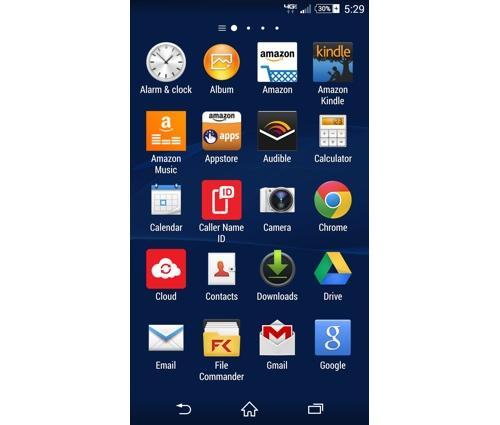
Beyond that, there are Amazon’s Amazon app, Amazon Kindle, Amazon Music, and Amazon Appstore. There’s also Audible, Kobo, IMDb, OfficeSuite, and Slacker Radio.
The problem with all of these apps, in addition to the fact that they’re being forced upon you, is that only three can be uninstalled. The rest take up permanent residence on your handset.
PlayStation 4 streamingThere is one app that will make PlayStation 4 owners happy: With the PlayStation app, you can stream and play your PS4 games to your Xperia handset, as long as the two devices are on the same WiFi network.
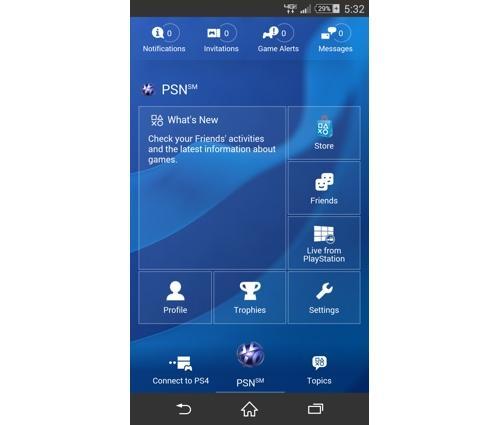
So if you’re in bed at night and want to play your favorite PS4 game, you just have to grab your phone and a controller and make sure the PS4 is on, and you’re good to go. Realistically? Most people are going to use this app in the bathroom.
Sony has also said it’s releasing a special controller mount that will let you attach your Xperia Z3v to your PS4 controller, making playing on the handset more intuitive.
Camera settingsSony produces some of the best cameras in the world, and the company uses some of that technology in its Z3v, giving the handset a 20.7-megapixel rear camera with a Carl Zeiss lens.
To complement the handset’s camera, Sony installed a variety of camera settings and apps. Which is to say there are way too many. There’s a Superior Auto mode for basic shooting, a Manual mode that lets you adjust a host of in-depth camera settings, and Sound Photo for capturing shots and adding sound to them.
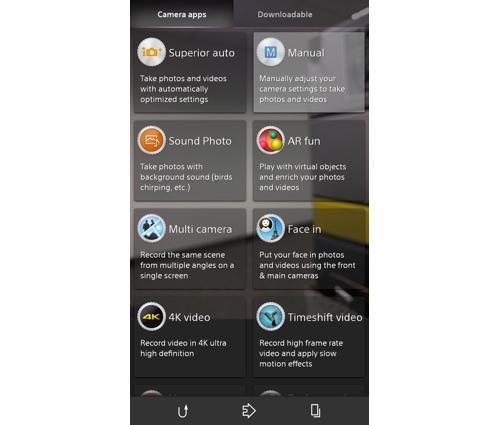
Then there’s a mode that uses augmented reality to digitally add things like fruit, snow, and small bombs that interact with your images. There’s even a mode for broadcasting your videos to YouTube. All told, there are 16 different camera modes, which is too many. Adding dinosaurs to pictures is fun and all, but I could just as well do without such a feature.
Camera performanceThe Xperia Z3v’s camera takes impressively sharp visuals, but colors are slightly washed out. Photos taken of yellow mums with the Z3v looked like they were instead a brownish orange. The same flowers looked bright yellow in pictures taken with the Galaxy S5 and iPhone 6.
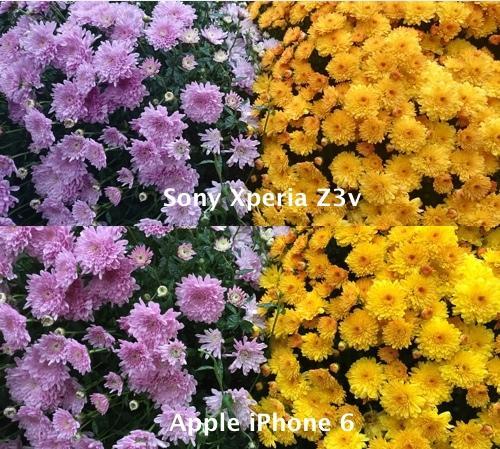
Likewise, a weathered ornamental sheep head on a lamppost appeared far brighter than it should have. Both the iPhone 6 and Galaxy S5 captured more accurate colors, though the iPhone 6’s image was the best.
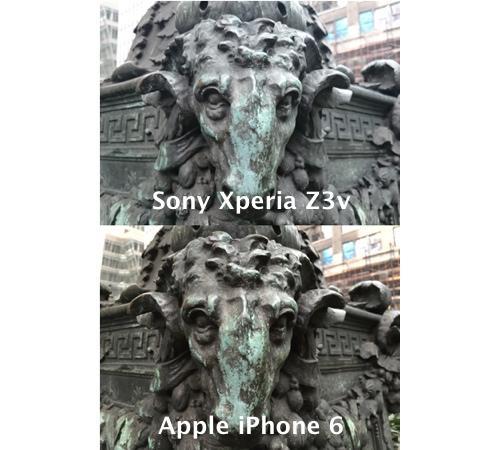
Video shot with the Z3v was sharp, though colors were just as washed out as they were in photos. If you want super-sharp video, you can record in 4K resolution, though since the Z3v’s display maxes out at 1080p, you won’t be able to see what your super high-res video looks like unless you play it on a 4K TV.
Battery life
The Xperia Z3v packs a massive 3,200 mAh battery, which is larger than both the Galaxy S5’s and the iPhone 6’s. As a result, the handset is an absolute marathon runner when it comes to battery life. I was easily able to get through more than a day with the Z3v before its battery finally gave out.
If you want to get even more out of your Z3v’s battery, you can enable Stamina mode or Ultra Stamina mode. Stamina mode will automatically disable your WiFi and mobile data, as well as restrict hardware performance when the Z3v’s screen is turned off.
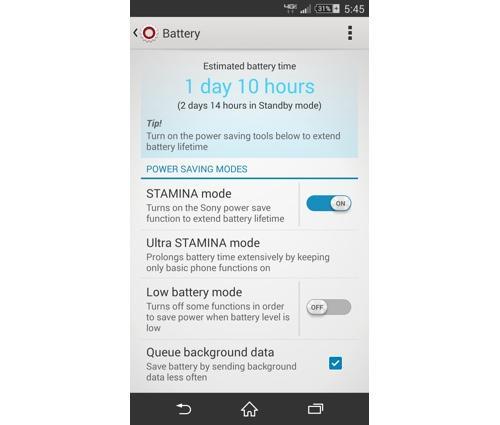
With Ultra Stamina mode, the Z3v’s WiFi and data connections will be completely disabled even when the display is on. Just a few apps will work in this mode, so use it only when you absolutely have to.
The Z3v also receives Qi wireless charging, something the standard Z3 doesn’t offer. To use wireless charging, you’ll have to buy a separate Qi charging pad for about $8 to $30.
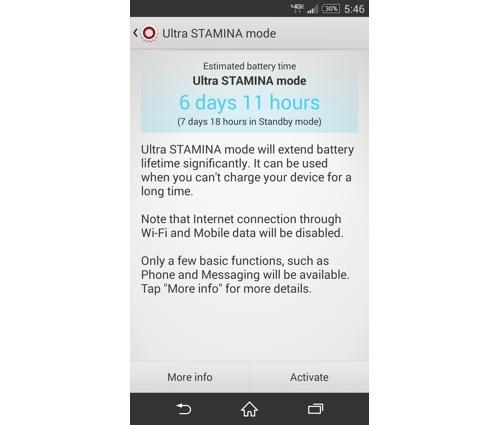
The thing is, your wireless charging pad still has to be plugged into a wall, and your handset has to be placed directly on top of it, so you can’t really use the phone while it’s charging, which limits the benefit of the technology.
Should you buy it?The Xperia Z3v is a quality smartphone and an improvement over Sony’s previous efforts, but its design and build aren’t nearly as attractive as the standard Z3 that’s available through T-Mobile.
If you’re interested in a smartphone that can stream your PlayStation 4 games, shake off a dip in the pool or sink, and last all day while doing it, then the Xperia Z3v is a quality handset.
But if you’re looking for an Android phone with an incredible display, excellent camera, and strong battery life, get the Galaxy S5. If you’re not wedded to Android, then the iPhone 6 is the best choice for you.
daniel howley - Yahoo
Sunday, 12 October 2014
Here's How Visa Plans to Keep Your Credit Cards Safe in Apple Pay
Apple is gearing up to launch its first mobile payments system, Apple Pay, which will allow you to make purchases with the iPhone 6 or iPhone 6 Plus by simply tapping your phone.
With the recent JP Morgan breach and Target hack that resulted in millions of stolen credit card numbers last year, you may be reluctant to use your phone as a payment method. Visa, however, assures that your information will remain safe thanks to the new Token Service it launched last month.
So what does this mean for Apple Pay users? Basically, if you’re using a Visa credit card, your payment credentials won’t be used when you execute transactions. In fact, Visa says they won’t even be stored on your phone at all.
Instead, the technology generates a specific digital account number that’s associated with your card. That means Apple Pay would never actually passes your 16-digit credit card number through to a merchant when you’re making a purchase with a Visa card. Rather, the digital account number is passed through to the merchant and then to Visa to charge your credit card.
This could prevent a hacker from intercepting your credit card number, since your credit card information isn’t actually being transferred.
If an intruder happens to retrieve your token, he or she won’t be able to perform any purchases with your card, according to Visa. To complete a purchase, Apple Pay requires a few different authenticators, such as your Touch ID fingerprint and Apple ID among other things.
If your phone is lost or stolen, Apple will completely wipe the token. You wouldn’t even need to replace your credit card, Visa said.
Visa’s Token Service isn’t just for Apple Pay — the company is making it available to all of its issuing financial institutions around the world starting with those in the US. But it’s worth noting that the service will work with Apple Pay when it launches.
Apple says its payment platform will be launching in October, but has yet to specify a hard release date. Visa tells us it expects “merchants and banks” to make some announcements in the next few weeks, but didn’t specify what the announcements would entail and whether or not they would be related to Apple Pay.
Wednesday, 8 October 2014
We Pick Up Our Smartphones 1,500 Times a Week, Stare at Them 3 Hours a Day
A recent study monitoring the behavior of mobile phone owners shows that the average smartphone owner picks up his device a staggering 1,500 times in a week and spends more than three hours a day staring into its screen.
The numbers come from a survey of 2,000 smartphone owners, conducted by the Tecmark marketing agency and reported by the Daily Mail.
The subjects first reached for their phones at 7:30 in the morning, on average, and many admitted to finding themselves using their phones “without realizing they’re doing so.” Two-thirds even said they manage to log in and browse Facebook without thinking about it, and four in 10 said the same about checking email.
Tecmark says its findings show that there are, on average, 140 tasks in a typical day that people now turn to smartphones for, cutting into time that used to be spent at desktops or laptops.
That last part seems to match recent Web surfing numbers. Earlier this year, mobile Web traffic actually overtook that of desktop computers for the first time in history. The decline in Web hits from PCs also somewhat coincides with an overall drop in computer sales in the past five years.
Could we soon be shifting to another screen? Some analysts are predicting the rise of a new, smaller display that could steal glances from smartphones: the smartwatch.
Google’s new Android Wear watches and Apple’s upcoming Apple Watch connect wirelessly to the handset in your pocket (or on your nightstand) and provide access to texts, emails, directions, and search information right from your wrist.
Though we’re not ready to crown these gizmos as smartphone killers just yet, we’ll certainly be watching their impact over the next year or so.
In the meantime, try looking up once in a while. OK?
Facebook tests mobile payments via Messenger app
According to screenshots that appeared this week, Facebook Messenger is already equipped to handle fast mobile payments with a user's registered card details.
Andrew Aude, a computer science student at Stanford University, discovered the hidden feature using iOS and OS X tool Cycript.
According to Aude, it is easy to transfer money using Facebook Messenger. Users can tap to attach money to a message, much like a photo, then choose from any registered card to make the payment.
Payments are private and not published to the News Feed. There is no need to register bank details, though it is not clear how Facebook finds the bank details of the recipient to transfer the cash.
This latest revelation all but confirms that Facebook is developing a payments feature for its Messanger app. The company hired former PayPal president David Marcus in June. And last month, reverse engineer Jonathan Zdziarski discovered Messenger had the ability to store credit card information.
Wednesday, 1 October 2014
Half of All Active Phones Are Damaged
Most of us have felt the anguish that goes with breaking a smartphone. Toilets, children, sidewalks, keys, and microwaves are all your enemies. And then you’re stuck with the agonizing decision of whether to live with the cracks and quirks or pay to get a new phone. So I guess it shouldn’t be surprising that nearly half of us make do with a broken phone.
Zagg, the mobile device accessories maker behind the popular Invisible Shield screen protector, commissioned a study that found that 48 percent of cellphone users and 27 percent of tablet users are living with a damaged device. To be fair, a screen protector manufacturer has a vested interest in these results. But I do believe them when they say 85 percent of smartphone users worry about breaking their screen. However, that’s not the biggest worry, which is the phone getting lost or stolen.
MORE: Best Smartphones Available Now
With a little digging into the study’s details, I discovered most of that damage is actually superficial scratches found on the body or screen. Smashed glass or broken phone bodies accounted for just 8 percent of damage phones and 10 percent of tablets. Perhaps least surprising, 16 percent of tablets are wrecked by kids. Nearly 40 percent of damaged phones are caused by a phone falling on the ground.
With a little digging into the study’s details, I discovered most of that damage is actually superficial scratches found on the body or screen. Smashed glass or broken phone bodies accounted for just 8 percent of damage phones and 10 percent of tablets. Perhaps least surprising, 16 percent of tablets are wrecked by kids. Nearly 40 percent of damaged phones are caused by a phone falling on the ground.
What is surprising is that half of people pay out to fix their phone. The average cost for such repairs? $144. That’s just a tad more than wrapping it up in a durable case. Sure, you’ll lose some of the prettiness of the design, but you’ll likely save yourself some despair in the process.
Zagg’s study was performed through a seven-minute online survey that garnered 768 responses from Americans aged 18 and older who currently use a smartphone or a tablet.
Sunday, 28 September 2014
Phoning 'home': what your mobile may be giving away
(Reuters) - When popular Chinese handset maker Xiaomi Inc admitted that its devices were sending users' personal information back to a server in China, it prompted howls of protest and an investigation by Taiwan's government.
The affair has also drawn attention to just how little we know about what happens between our smartphone and the outside world. In short: it might be in your pocket, but you don't call the shots.
As long as a device is switched on, it could be communicating with at least three different masters: the company that built it, the telephone company it connects to, and the developers of any third party applications you installed on the device - or were pre-installed before you bought it.
All these companies could have programed the device to send data 'back home' to them over a wireless or cellular network - with or without the user's knowledge or consent. In Xiaomi's case, as soon as a user booted up their device it started sending personal data 'back home'.
This, Xiaomi said, was to allow users to send SMS messages without having to pay operator charges by routing the messages through Xiaomi's servers. To do that, the company said, it needed to know the contents of users' address books.
"What Xiaomi did originally was clearly wrong: they were collecting your address book and sending it to themselves without you ever agreeing to it," said Mikko Hypponen, whose computer security company F-Secure helped uncover the problem. "What's more, it was sent unencrypted."
Xiaomi has said it since fixed the problem by seeking users' permission first, and only sending data over encrypted connections, he noted.
INDUSTRY ISSUE
Xiaomi is by no means alone in grabbing data from your phone as soon as you switch it on.
A cellular operator may collect data from you, ostensibly to improve how you set up your phone for the first time, says Bryce Boland, Asia Pacific chief technology officer at FireEye, an internet security firm. Handset makers, he said, may also be collecting information, from your location to how long it takes you to set up the phone.
"It's not that it's specific to any handset maker or telco," said Boland. "It's more of an industry problem, where organizations are taking steps to collect data they can use for a variety of purposes, which may be legitimate but potentially also have some privacy concerns."
Many carriers, for example, include in their terms of service the right to collect personal data about the device, computer and online activities - including what web sites users visit. One case study by Hewlett-Packard (HPQ.N) and Qosmos, a French internet security company, was able to track individual devices to, for example, identify how many Facebook (FB.O) messages a user sent. The goal: using all this data to pitch users highly personalized advertising.
But some users fear it's not just the carriers collecting such detailed data.
Three years ago, users were alarmed to hear that U.S. carriers pre-installed an app from a company called Carrier IQ that appeared to transmit personal data to the carrier.
Users filed a class-action lawsuit, not against the carriers but against handset makers including HTC Corp (2498.TW), Samsung Electronics (005930.KS) and LG Electronics (066570.KS) which, they say, used the software to go beyond collecting diagnostic data the carriers needed.
The suit alleges the handset firms used the Carrier IQ software to intercept private information for themselves, including recording users' email and text messages without their permission - data the users claim may also have been shared with third parties. The companies are contesting the case.
And then there are the apps that users install. Each requires your permission to be able to access data or functions on your device - the microphone, say, if you want that device to record audio, or locational data if you want it to provide suggestions about nearby restaurants.
SHEDDING SOME LIGHT
But it isn't always easy for a user to figure out just what information or functions are being accessed, what data is then being sent back to the developers' servers - and what happens to that data once it gets there. Bitdefender, a Romania-based antivirus manufacturer, found last year that one in three of Android smartphone apps upload personal information to "third party companies, without specifically letting you know."
Not only is this hidden from the user, it's often unrelated to the app's purpose.
Take for example, an Android app that turns your device into a torch by turning on all its lights - from the camera flash to the keyboard backlight. When users complained about it also sending location-based data, the U.S. Federal Trade Commission forced the app's Idaho-based developer to make clear the free app was also collecting data so it could target users with location-specific ads. Even so, the app has been installed more than 50 million times and has overwhelmingly positive user reviews.
While most concerns are about phones running Android, Apple Inc's (AAPL.O) devices aren't free from privacy concerns.
Carriers control the code on the SIM, for example, and this is one possible way to access data on the phone. And, despite stricter controls over apps in Apple's app store, FireEye's Boland says his company continues to find malicious apps for the iOS platform, and apps that send sensitive data without the user knowing. "The iPhone platform is more secure than the Android platform, but it's certainly not perfect," he said.
Apple says its iOS protects users' data by ensuring apps are digitally signed and verified by Apple's own security system.
BACK IN THE DRIVING SEAT
The problem, then, often isn't about whether handset makers, app developers and phone companies are grabbing data from your phone, but what kind of data, when, and for what.
"If we look at the content sent by many apps it's mindboggling how much is actually sent," said Boland. "It's impossible for someone to really know whether something is good or bad unless they know the context."
Handset makers need to be clear with users about what they're doing and why, said Carl Pei, director at OnePlus, a Shenzhen, China-based upstart rival to Xiaomi. OnePlus collects "anonymous statistical information" such as where a phone is activated, the model and the version of software that runs on it, Pei said, which helps them make better decisions about servicing customers and where to focus production.
Unlike Xiaomi, Pei said, OnePlus' servers are based in the United States, which in the light of recent privacy concerns, he said, "gives people greater peace of mind than having them based out of China."
That peace of mind may be elusive as long as there's money to be made, says David Rogers, who teaches mobile systems security at the University of Oxford and chairs the Device Security Group at the GSMA, a global mobile industry trade association.
"Users are often sacrificed to very poor security design and a lack of consideration for privacy," he said. "At the same time, taking user data is part of a profit model for many corporations so they don't make it easy for users to prevent what is essentially data theft."
Thursday, 25 September 2014
SAMSUNG ALPHA BIG ON DESIGN, SHORT ON TECH
(AP) - Apple filled a gaping hole in its product lineup with new iPhones boasting larger screens like Samsung's flagship Galaxy smartphones. Now, Samsung is coming out with a smaller phone that looks and feels more like an iPhone.
The new iPhones measure 4.7 inches and 5.5 inches diagonally, up from 4 inches before. Still, that's smaller than the 5.1 inches on the Galaxy S5 and the 5.7 inches on the Galaxy Note 3 and 4 phones.
But even Samsung is stepping back from its recent practice of releasing ever-bigger phones. The new Galaxy Alpha matches the 4.7 inches on the iPhone 6 and has a metal frame like the new iPhones, reflecting Samsung's attempt to mirror Apple's emphasis on design.
Unfortunately, the Alpha falls short in a few ways, including the resolution of its display. Other shortcomings will become apparent as I go through the various features.
The Alpha will be available in the U.S. starting Friday through AT&T. It will cost $200 with a two-year service contract, or $613 without one. The $613 price, which can be paid in installments, is less than the $650 starting price for the Galaxy S5 and the iPhone 6. You also get double the storage with the Alpha, but it's still a high price to pay for technology that isn't top of the line.
---
- THE BUILD:
The Alpha's metal frame represents a departure from previous Samsung Galaxy phones, which primarily consisted of polycarbonate plastics.
However, the Alpha still has a plastic back, albeit one that feels smoother and nicer than what's on the S5. You can swap in a spare battery, but can't add a memory card.
What struck me most was how the Alpha feels much like last year's iPhone 5s. The sides are smooth and straight, and the edges are at right angles, like the box for a deck of cards. The corners, though, are curved.
By contrast, the new iPhones feature curved edges, so they feel thinner, lighter and less boxy. But the Alpha is actually smaller, thinner and lighter than the iPhone 6 - by a tad. Compared with both, the S5 feels giant.
---
- THE SCREEN:
Size isn't all that matters. The screens on the iPhone 6 and the S5 are both sharper than the Alpha's. The Alpha's screen is decent for reading text and viewing images, but it's about the same resolution as what Samsung built into the Galaxy S III phone back in 2012.
Like other Samsung phones, the Alpha uses a screen technology called AMOLED, for active-matrix organic light-emitting diodes. This is designed to produce richer colors than iPhones, but sometimes the technology goes overboard. For instance, some people complain that AMOLED technology distorts color, so human skin looks too orange, for instance. There was a hint of that when viewing photos and video, but not enough to bother me.
---
- THE CAMERA:
The Alpha's camera is 12 megapixels, less than the 16 megapixels on the S5. Although the Alpha's megapixel count is still higher than the iPhone's 8 megapixels, Apple has squeezed many other technological touches into iPhones to deliver consistently good images.
I took dozens of photos with all three phones and found the megapixel count mattered only in a handful. In good light, street signs and posters on a store window across the street came out slightly better on both Samsung phones.
However, the iPhone 6 was typically better at getting the focus right, particularly for low-light and close-up shots. The iPhone 6 quickly captures text on a bottle of contact lens solution, while it took a few tries with the Samsung phones to get the focusing right.
On some evening shots of the New York skyline, I could make out the rectangular windows of apartment buildings when using the iPhone, thanks to anti-shake stabilization technology. With both Samsung phones, the lights from the windows were bleeding into one another.
In my test shots, the iPhone 6 also had better white balance to offset the yellowish coloring of indoor lighting. That said, the Alpha produced the richest colors in a few of my shots.
---
- THE REMAINING HARDWARE:
Like the S5, the Alpha has a heart-rate monitor for fitness apps and a fingerprint sensor to unlock the phone. But the Alpha lacks the S5's waterproof coverings. The new iPhones have only the fingerprint sensor. The Alpha and the iPhone 6 have comparable battery life in my tests.
The Alpha's storage stands out. It offers 32 gigabytes for about the same price as a 16-gigabyte phone from most rivals. With the new iPhones, Apple has doubled the storage in the pricier models, but the base models are still at 16 gigabytes. Most phones cost $100 more for a 32-gigabyte version.
Even with the added storage, the Alpha just seems too expensive for what you get. Given that memory costs have been coming down, more storage ought to be as routine as faster processors in each generation of phones.
The Alpha's design is impressive, but the rest of the phone is only adequate. HTC and Apple, for instance, have both been able to produce stunning designs while squeezing in the latest technologies.
Apple has made design central to its iPhones since its first model in 2007. Samsung seems to embracing the importance of design with the Alpha. Along the same lines, the upcoming Galaxy Note 4 phone will have a similar metal frame as Samsung attempts to ratchet up its rivalry with Apple. With better hardware, that phone will have a better chance than the Alpha at challenging the new iPhones.
Apple plays defense on iPhone 6 bending, software concerns
(Reuters) - Apple Inc (AAPL.O) broke its silence on complaints about bending iPhones, hours after withdrawing a glitch-ridden software update as the company struggles to restore momentum to the rollout of its latest phones.
"With normal use, a bend in iPhone is extremely rare and through our first six days of sale, a total of nine customers have contacted Apple with a bent iPhone 6 Plus," Apple spokeswoman Trudy Muller said in an email.
Apple shares closed down nearly 4 percent at $97.87 on Thursday, wiping out nearly $23 billion in market value.
The new phones face criticism over their bendability, dubbed "bendgate". Social media and online forums have been abuzz with comments about how the new phones can bend when placed in back pockets or while wearing skinny jeans.
Apple said its iPhones feature stainless steel and titanium inserts to reinforce high-stress locations and use the strongest glass in the smartphone industry.
The only way an iPhone may have bent is if someone put it in their back pocket and sat on the phone for a very long time, said Laban Roomes, chief executive of Goldgenie, which customizes and gold plates iPhones.
Apple was also forced to withdraw a faulty update to its latest operating system after some users of its new phones complained of call service disruptions.
"We apologize for the great inconvenience experienced by users," Muller said.
Apple said on its website it was working on an iOS update to fix the issue, and will release it in the next few days. (bit.ly/1qxHWGR)
"I do believe this speaks to execution issues at Apple," said JMP Securities analyst Alex Gauna. "At the end of the day I believe this too shall pass, but we are noting with concern that the miscues pile up."
Apple said on Monday it had shipped 10 million units of iPhone 6 and 6 Plus.
Users of the iPhone 6 and 6 Plus also complained about the inability to use the fingerprint-reading Touch ID after updating to iOS 8.0.1.
Some users had complained of "sluggish Wi-Fi and dwindling battery life" after moving to iOS 8, Time magazine reported earlier this week. (ti.me/1pqlCPt)
On Thursday, Apple issued a step-by-step guide for users to reinstall iOS 8, launched last week, through the latest version of iTunes. The health app will not work for now and will be fixed in the next software update, the company said.
Customers might, however, hope for replacements for their bent iPhones, depending on whether their devices passed an inspection, tech news website The Next Web reported, quoting an Apple support executive. (tnw.co/1rlv7mW)
"It's not game over for Apple, but nor should we give them a pass on this," Gauna said.
Cases of bent iPhones 5 and 5s had been reported in 2013 by Cult of Mac, a website that exclusively covers Apple. (bit.ly/1sjZbOT)
Rival smartphone makers took digs at Apple's problems.
A Samsung Electronics Co Ltd (005930.KS) advertisement showcased a bending phone against its own product, while BlackBerry Ltd (BB.TO) CEO John Chen said: "I would challenge you guys to bend our Passport."
Nestle SA's (NESN.VX) Kit-Kat chocolate wafer brand tweeted "We don't bend, we break".
Wednesday, 24 September 2014
Apple iPhone rollout marred by ‘bendgate,’ dropped cell service
(Reuters) - Two new Apple (AAPL.O) products hit speed bumps on Wednesday: iPhone 6 Plus buyers discovered their phones can bend when placed in back pockets, and the company pulled its latest mobile operating system after reports of dropped cellular service.
"Bendgate," as the problem has already been dubbed on social media sites, is a reminder of 2010's "antennagate," when iPhone 4 users reported a design flaw that caused dropped calls.
Apple did not comment on the bending-phone reports. But it did announce that it was investigating reports of an issue with an update of its iOS 8 operating system and in the meantime had pulled the version designated 8.0.1.
The bendable-phone situation might prove particularly troubling for those who wear skinny jeans, according to reports on Facebook and Twitter. The phrase "Your pants are too tight for your phone" has already received hundreds of mentions.
Some say the device, which has a lightweight aluminum shell, is more malleable than expected, but that might fall short of a design flaw, according to analysts.
Overall, evaluators seem flummoxed.
"A 'bendability test' hasn’t been part of our breakability testing to date because up until this week we’ve never seen a phone thin enough to make this a potential issue," said a spokesman at SquareTrade.
SquareTrade, which provides warranties to iPhone users, said it planned more tests later on Wednesday.
Reports on the quirk first surfaced on Unbox Therapy, a gadget-review show on YouTube.
Brandwatch, a company that tracks and analyzes data from social media sites, said only a small number of people tweeted about the "bend" in the days leading up to Sept. 22. But after the release of the YouTube video, which had racked up over 6 million views by midday Wednesday, Twitter mentions of the "bend" had skyrocketed to 75,000.
Tweets are flying about the "bend in your pocket," the challenge of wearing "tight pants," and that the iPhone 6 Plus bends "with bare hands," said Brandwatch spokeswoman Dinah Alobeid.
Another key topic, she said, is a comparison with the Samsung Galaxy Note 3 phone, which has nearly 4,500 mentions.
Apple spokespeople did not immediately respond to requests for comment, but at least one rival smartphone maker jumped at the chance to weigh in.
"I would challenge you guys to bend our Passport," John Chen, Blackberry’s (BB.TO) chief executive officer, said on Wednesday at an event in Toronto to unveil its newest phone.
On Monday, Apple said it had shipped 10 million units of the iPhone 6 and 6 Plus since it began selling the phone on Friday.
Apple stock edged down 89 cents, or 0.87 percent to $101.75 on the Nasdaq on Wednesday.
10 Awesome iPhone 6 and 6 Plus Cases
Smartphone cases have gone from a necessary evil that protect your phone from the inevitable bumps and bruises of everyday life to sophisticated fashion statements.
And the newest crop of cases and bumpers for the iPhone 6 and 6 Plus are no different. We’re talking about cases that range from beefy pieces of rubbery plastic to shells made of all-natural wood and leather, and everything in between.
In other words, if you’re looking for some new cases for your iPhone 6 or 6 Plus, you might want to start with these.
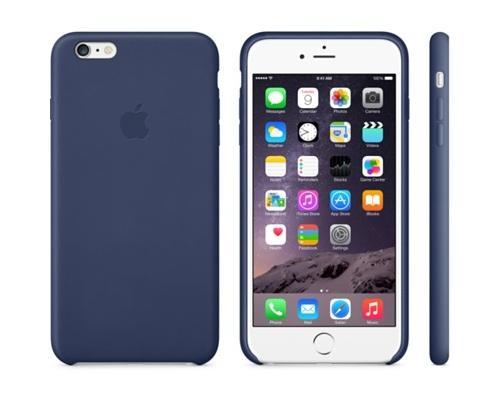
Apple’s own leather cases for the iPhone 6 and 6 Plus are as simple as cases get. Priced at $45 and $49 for the 6 and 6 Plus, respectively, Apple promises that these leather cases will protect your phone without adding much bulk.
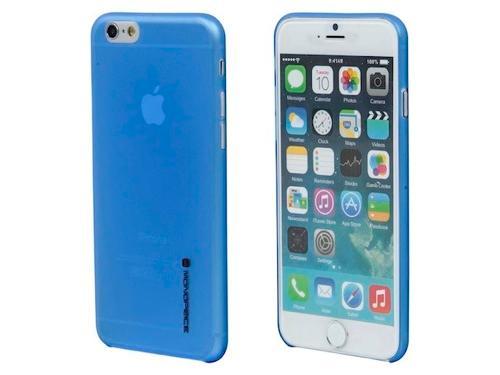
Monoprice’s ultra-thin shatterproof case for the iPhone 6 is available for just $5.60 and will protect your precious smartphone against the nicks and cuts that result from everyday drops. It won’t, however, protect your screen much. So if your iPhone face-plants, its screen is still at risk of shattering. But if you want a case for your phone and don’t want to spend $50, you can’t go wrong with this one.
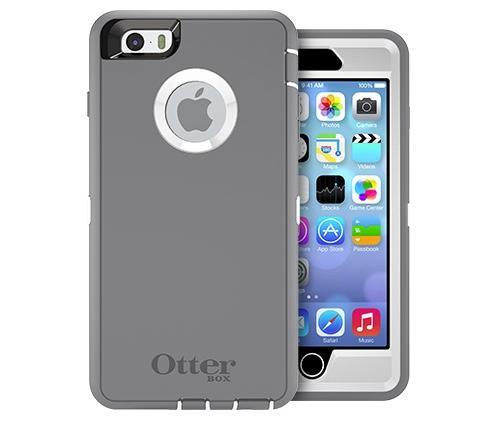
OtterBox is known for offering super-sturdy smartphone cases, and its Defender Series is the company’s beefiest of all. Priced at $59.90 and $69.60 for the iPhone 6 and 6 Plus, respectively, the Defender Series packs three layers of protection, a built-in screen protector, and port covers to protect against dust. And for everyone stuck in 2009, the Defender also includes a belt holster that doubles as a kickstand.
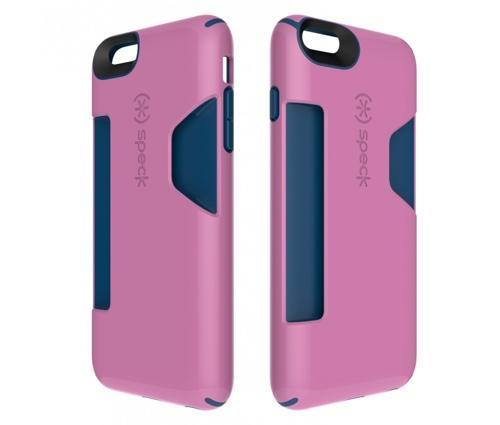
Want to protect your iPhone and ditch your wallet? The Speck CandyShell Card Case has you covered. Offering an impact-resistant outer coating and a raised bezel to protect your phone’s display, the Card Case is seriously durable. What’s more, its backside features room for three credit cards and some folded bills. Priced at $39 for the iPhone 6 and $44 for the iPhone 6 Plus, it’s a 2-for-1 special for your smartphone.
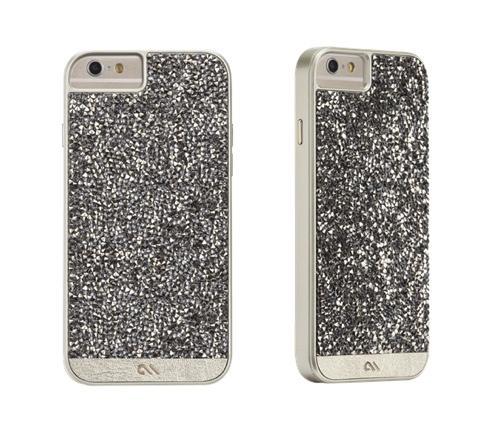
If you want to add some extra pizazz to your iPhone 6 or 6 Plus, look no further than Case-Mate’s Brilliance Case. At $80 for both iPhone 6 and 6 Plus models, the Brilliance Case’s back panel is covered in shimmering crystals. The Brilliance isn’t just a pretty face, though. It also offers dual-layer protection, and its bezel extends past the iPhone’s display to keep it from smacking against the floor if you drop it face-down.
![Stowaway [Advance] iPhone case from Incipio](https://s.yimg.com/cd/resizer/2.0/FIT_TO_WIDTH-w500/e739a9071438f6e957e96f509455458472e898f0.jpg) The Incipio Stowaway [Advance] is what happens when you smash a phone case, a wallet, and a kickstand together really hard. Priced at $34.99 for either the iPhone 6 or the 6 Plus version, the Stowaway includes a slot for up to three credit cards, your ID, or cash. A kickstand situated above the credit card slot lets you prop up your phone to watch movies or TV shows. Oh, and it’ll protect your phone, too.
The Incipio Stowaway [Advance] is what happens when you smash a phone case, a wallet, and a kickstand together really hard. Priced at $34.99 for either the iPhone 6 or the 6 Plus version, the Stowaway includes a slot for up to three credit cards, your ID, or cash. A kickstand situated above the credit card slot lets you prop up your phone to watch movies or TV shows. Oh, and it’ll protect your phone, too.
7. Radius v2
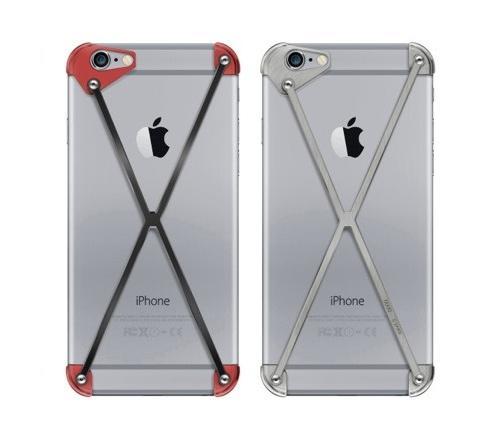
The folks at BiteMyApple call this case the bikini of iPhone cases, and for good reason. The Radius v2 uses the bare minimum of material needed to cover and protect your iPhone 6 ($79) or 6 Plus ($89) from drops, bumps, and bruises. Unlike most cases, the Radius v2 doesn’t completely cover up the iPhone 6’s beautiful shell. The trade-off is that it also leaves the phone more exposed, making it susceptible to scratches and nicks. That said, it certainly looks cool.
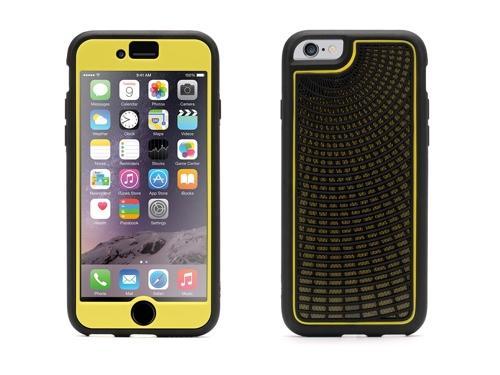
The iPhone 6 and 6 Plus have taken some knocks for being a bit more slippery than their predecessors. Griffin Technology’s Identity Performance case ($40) seeks to solve that problem with a no-skid back panel. And if your phone does slip from your grasp, the Identity Performance’s shell will protect it from drops as high as 4 feet. An included reusable screen protector will also keep your iPhone’s display safe from scratches and nicks.
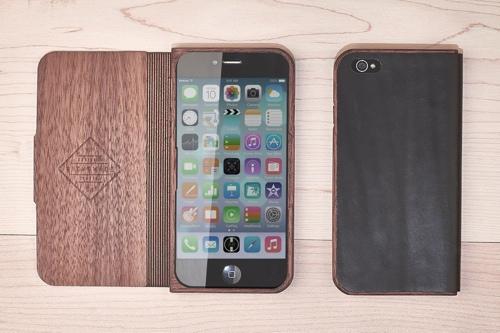
Grovemade’s Walnut and Leather iPhone Case lets your iPhone go au naturel without you having to fear that it’ll break if it slips from your hand. That’s because, Grovemade’s cases are made using all-natural walnut wood. Get it, naturel, natural? … Anyway, the Walnut and Leather iPhone Case protects your iPhone from falls while also doubling as a stand thanks to its flexible leather cover. These handcrafted cases cost $129 for the iPhone 6 and $139 for the 6 Plus.

Tech21’s cases use a special D30 material that is both flexible and durable to help absorb impacts from falls. They’ve smashed the stuff with a hammer in demonstrations, and it doesn’t break. Available for $35 for the iPhone 6 and $39 for the 6 Plus, the Classic Shell offers protection for both the front and back of your precious smartphone. But please don’t try the hammer thing.
Daniel Howley
Yahoo
Daniel Howley
Yahoo
Subscribe to:
Comments
(
Atom
)


















